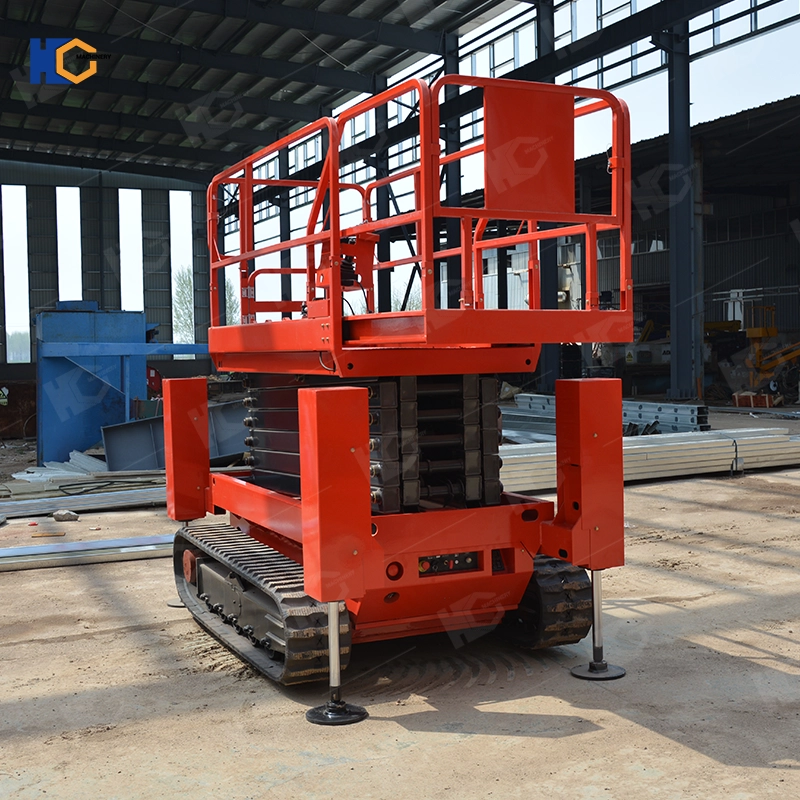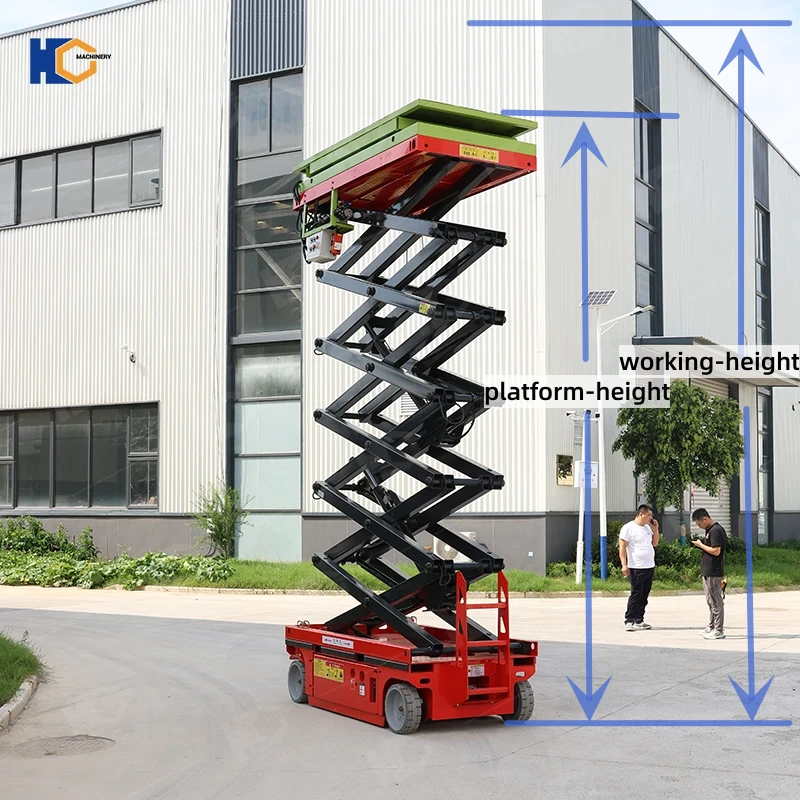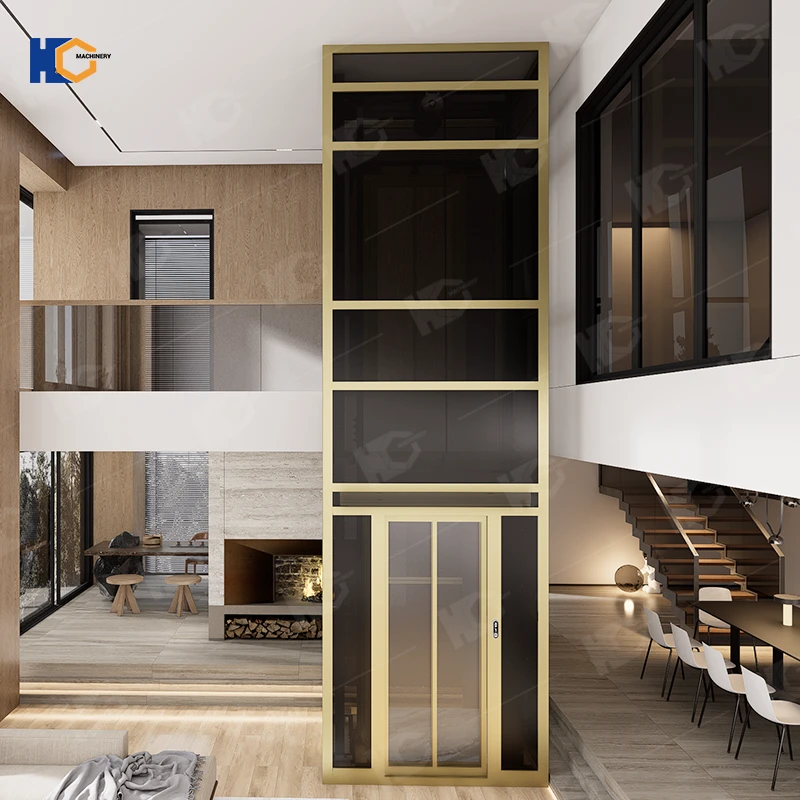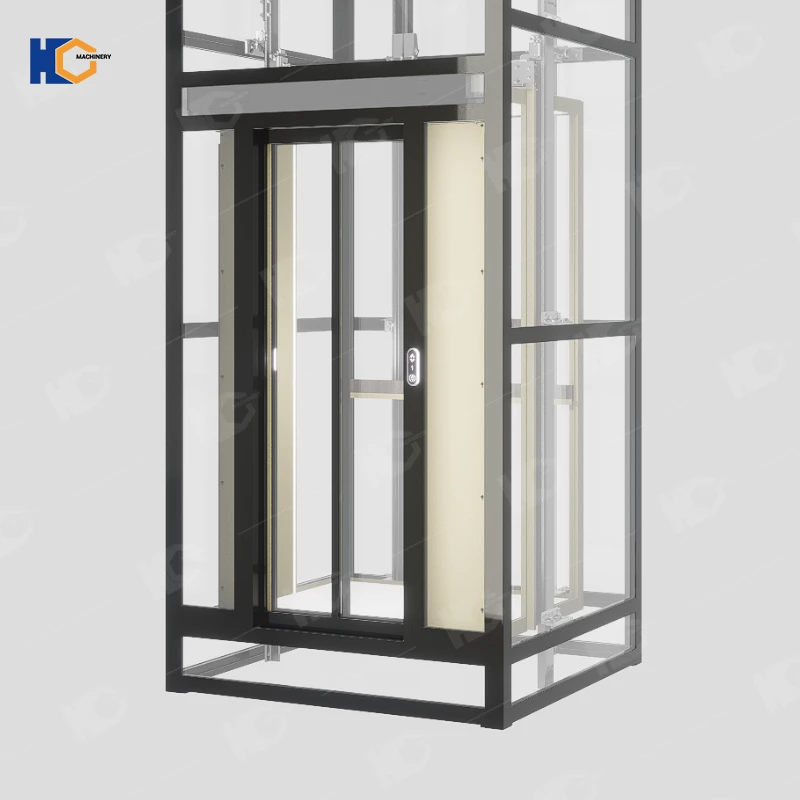Introduction
When selecting a scissor lift for construction, maintenance, or industrial applications, two terms often cause confusion: platform height and working height. While both describe how high a lift can reach, they are not the same measurement. Understanding the difference between scissor lift platform height vs working height is crucial for ensuring worker safety, project efficiency, and regulatory compliance.
This article provides a comprehensive guide to these two concepts, backed by industry research data, real-world applications, and comparative tables. We will also highlight how Jinan Huichuang Machinery Manufacturing Co., Ltd. (Huichuang Lift) delivers reliable, certified lifting platforms that meet international standards.
What is Scissor Lift Platform Height?
Platform height refers to the vertical distance from the ground to the floor of the scissor lift platform when it is fully extended. This is the actual height at which the operator stands.
For example, if a scissor lift has a platform height of 10 meters, the worker will be standing 10 meters above the ground. However, this does not mean they can only reach 10 meters, since arm length and body reach allow them to work higher.

Scissor lift, platform height about 12m, can be used in Construction, painting, mechanical repairs etc.
What is Scissor Lift Working Height?
Working height is the maximum height a worker can reach safely while standing on the platform. It is generally calculated as platform height + 2 meters (6.5 feet), which accounts for the average person’s reach above their head.
So, a scissor lift with a 10-meter platform height would have a working height of 12 meters.
This distinction is important because many project specifications, safety regulations, and purchase decisions are based on working height, not just platform height.
Research Data: Industry Standards and Usage
To provide clarity, we collected research data from industry standards such as ANSI, OSHA, and CE guidelines, as well as market data on scissor lift usage across industries.
Table 1. Comparison of Platform Height vs Working Height
| Platform Height (m) | Working Height (m) | Common Applications |
|---|---|---|
| 4 m | 6 m | Indoor electrical maintenance, warehousing |
| 6 m | 8 m | Facility management, HVAC servicing |
| 8 m | 10 m | Retail store ceiling work, lighting |
| 10 m | 12 m | Construction, painting, mechanical repairs |
| 12 m | 14 m | Outdoor building maintenance, signage installation |
| 15 m | 17 m | Large-scale construction, industrial projects |
Why the Distinction Matters
Understanding scissor lift platform height vs working height is more than technical detail—it directly impacts project planning, worker safety, and cost efficiency.
Safety Compliance: Regulations often require defining safe working height, not just platform height.
Accurate Project Planning: Choosing the wrong specification could result in renting or buying a lift that cannot reach the required workspace.
Cost Optimization: A higher working height often means a more expensive lift. By knowing exact requirements, companies can avoid overspending.
Market Insights: Demand by Height Range
According to a 2023 market report on aerial work platforms, the global scissor lift market reached USD 10.3 billion, with demand distributed across various platform heights.
Table 2. Global Scissor Lift Market by Platform Height
| Platform Height Range | Market Share (%) | Key Users |
|---|---|---|
| Under 6 m | 25% | Warehousing, logistics, retail |
| 6–10 m | 35% | Facilities management, construction |
| 10–15 m | 30% | Industrial, building maintenance |
| Over 15 m | 10% | Large-scale construction, infrastructure |
This data shows that 6–10 meter platform height scissor lifts (8–12 meter working height) dominate the market due to their versatility.
Safety Considerations in Working Height
While working height provides an approximate measurement, safety organizations emphasize that actual working conditions can reduce safe reach. For example:
Wind speed: Outdoor lifts may have limited extension in strong winds.
Load capacity: Overloading the platform can impact stability.
Surface level: Uneven ground reduces safe working height.
Table 3. OSHA/ANSI Safety Guidelines Related to Working Height
| Factor | Recommendation |
|---|---|
| Fall protection | Guardrails required; harnesses for boom lifts |
| Safe working reach | Calculate working height as platform height + 2 m |
| Weight limit | Do not exceed manufacturer’s max load rating |
| Training | Operators must be trained and certified |
| Wind speed | Do not operate outdoors above 12.5 m/s wind |

Crawler scissor lift with guardrail protection, which is safer.
Practical Example: Calculating the Right Height
If a company needs to change light fixtures in a warehouse with a 12-meter ceiling height, what scissor lift should they choose?
Platform height needed = Ceiling height – Worker reach (2 m) = 10 m
Required lift = Scissor lift with 10 m platform height (12 m working height)
This calculation ensures that workers can reach comfortably without overstretching or violating safety standards.
Huichuang Lift: Delivering Reliable Scissor Lift Solutions
As a trusted manufacturer, Huichuang Lift designs and produces advanced hydraulic lifting platforms that fully address the difference between scissor lift platform height vs working height.
Why Choose Huichuang Lift?
Certified Quality: CE, ISO, and ASME A17.1 certified lifts.
Wide Range: Hydraulic aerial work lifts, home elevators, articulating boom lifts, and telescopic boom lifts.
Custom Solutions: Tailored lifts for unique project requirements.
Global Reach: Trusted by clients in North America, South America, Europe, and Southeast Asia.
Proven Reliability: Over 200 skilled staff, advanced workshops, and R&D capabilities.
With products designed for safety, efficiency, and cost-effectiveness, Huichuang Lift helps businesses achieve hassle-free lifting experiences.
Future Trends in Scissor Lift Heights
The scissor lift industry is evolving to meet new demands:
Compact high-reach models for urban construction sites.
Electric scissor lifts reducing environmental impact.
IoT-enabled lifts for real-time monitoring of platform and working height.
Stricter safety regulations, requiring more clarity between platform and working height in product specifications.
Huichuang Lift is committed to R&D innovation in these areas, ensuring that clients receive cutting-edge lifting solutions.
Conclusion
Understanding the difference between scissor lift platform height vs working height is essential for safety, efficiency, and project success. Platform height measures where the operator stands, while working height adds approximately 2 meters to represent the maximum reach.
By choosing the right scissor lift, companies can optimize costs, meet project requirements, and ensure worker safety. With its certified quality, innovative R&D, and global reputation, Huichuang Lift continues to provide professional lifting solutions trusted worldwide. Welcome to contact Huichuang lift!



